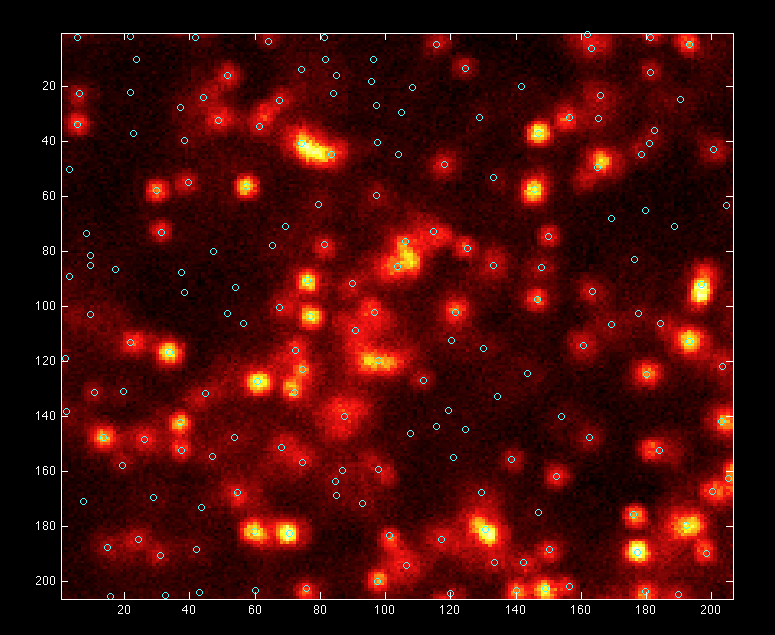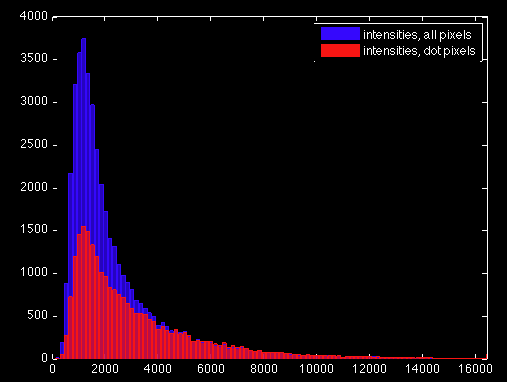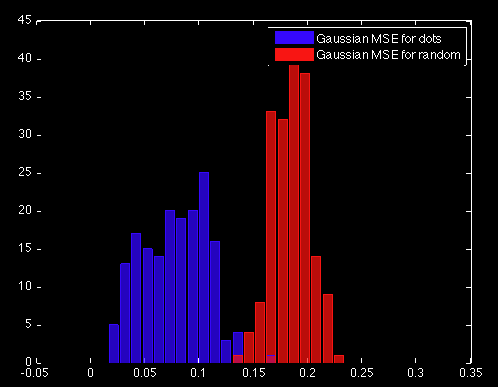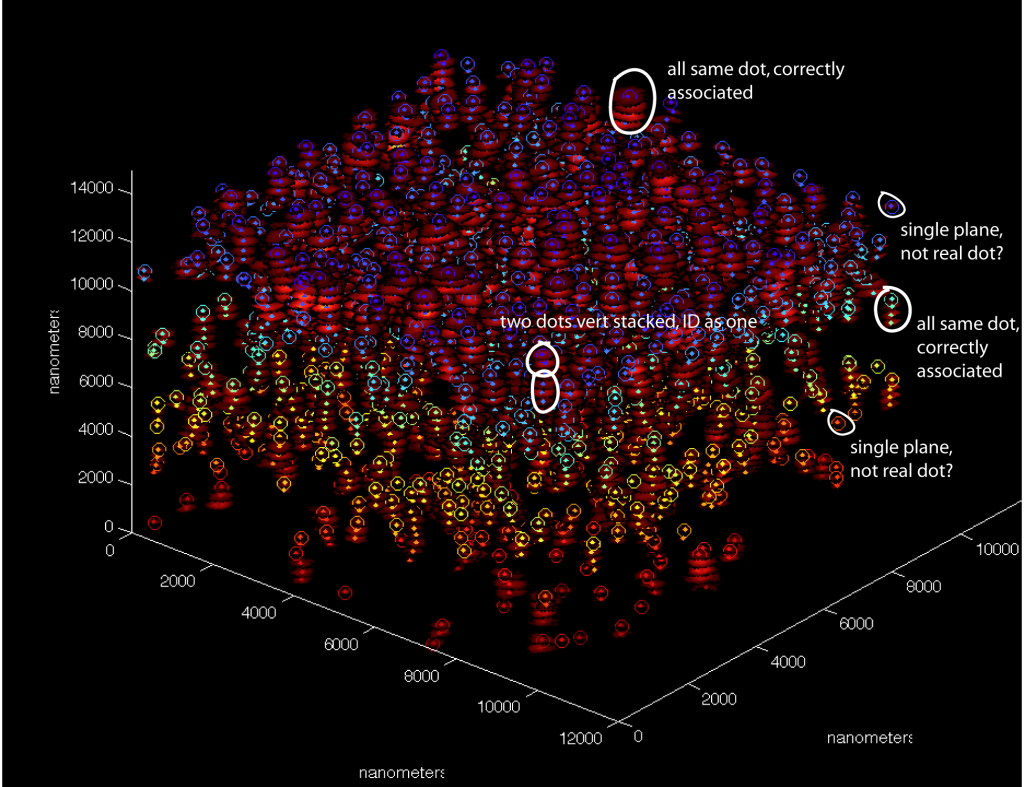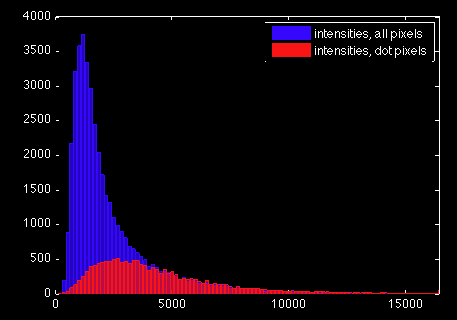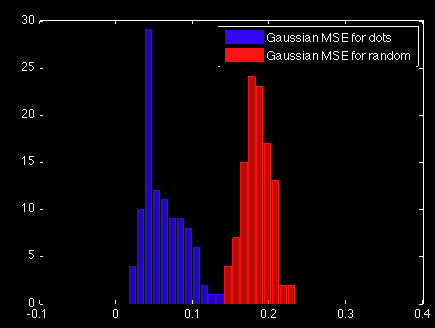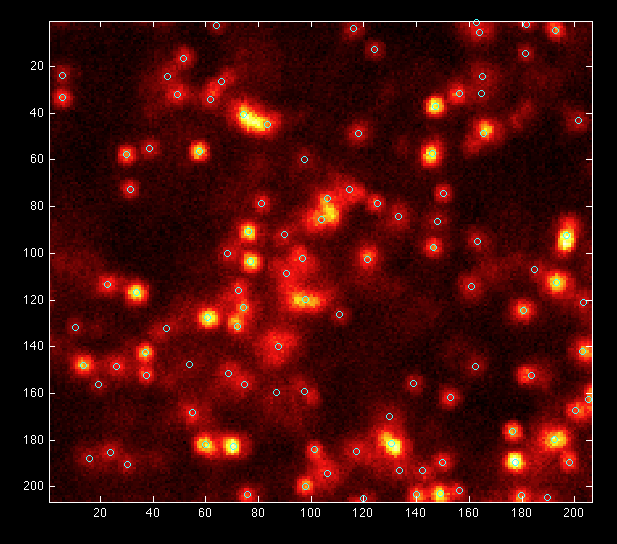with minimum threshold, (min_int = .01), lots more exogenous dots with poorer gaussian fit and low intensity. Note: intensities intentionally rescaled, saturating bright dots, in order to make visible the low intensity pixels.
$latex \alpha_E$ = 1; sigmaE = 3; alphaI = 1.0; min_int = 0.05; FiltSize = 25; min_size = 10; sigmaI = 3.2;
Issues with current classification:
Comparing intensities:
Gaussian dot fitting:
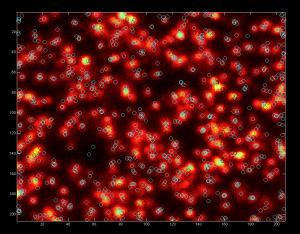
Rejecting bad fit doesn’t help much: Here I use a .1 MSE cut-off from the normalized Gaussian with $latex \sigma = 3.5$ 12×12 filter size. Some off-dot points are removed. Looks like reliable detection in multiple layers will make a better filter. Maybe insisting simple 3D gaussian (present in 3 layers with max intensity in middle layer) will be the best approach. Might be screwed up by slight off-center effects of neigboring bright nuclei in above and below channels.
Meanwhile true dots look like pretty good Gaussians:
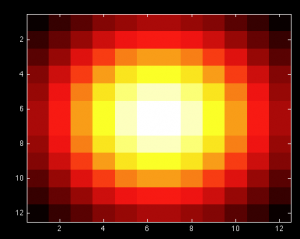
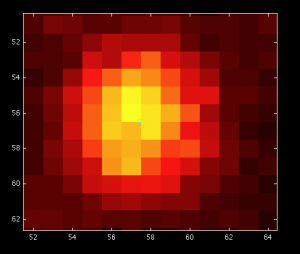
 Now working on comparing between layers. New code in CheckDotUpDown looks at all dots in a given layer and tries to follow them up and down as far as they will go by pairing with the closest dot in the adjacent layers. All associated dot’s center must be within distance ‘ovlap’ (3 pixels?) from the orignal dot.
Now working on comparing between layers. New code in CheckDotUpDown looks at all dots in a given layer and tries to follow them up and down as far as they will go by pairing with the closest dot in the adjacent layers. All associated dot’s center must be within distance ‘ovlap’ (3 pixels?) from the orignal dot.
Then use the original dot finding mask to get the intensity of each spot. These can be plotted as shown here: multiple maximums in a single track IDs stacked dots. In preliminary trial, removing all single layer dots (30%) with a zero threshold gives similar total count to using a 0.05 threshold and removing single dots (20%). Need more tests. Would like better visualization as well. Project to continue tomorrow.

